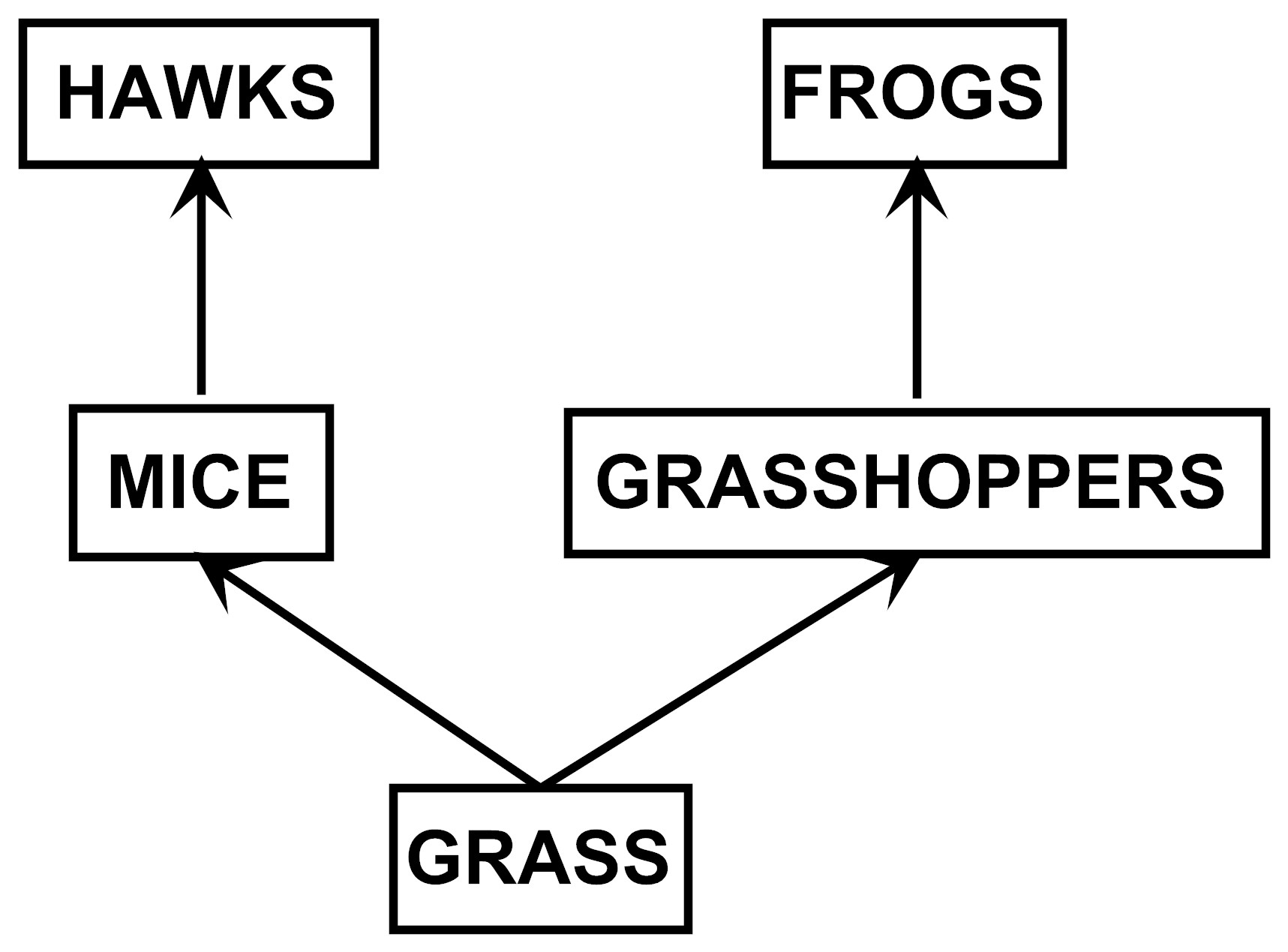Item IE028006: Changes in a population (frogs) may affect populations that are not directly connected by a feeding relationship (mice) even if they are several steps away and not within the same chain in a food web.
The diagram below shows the feeding relationships between populations of organisms in an area. The arrows point from the organisms being eaten to the organisms that eat them.

Using only the relationships between the organisms shown in the diagram, what will happen to the number of mice if most of the frogs are killed and why?
- The number of mice will decrease because the number of individuals in all of the populations of organisms in this diagram will decrease.
- The number of mice will decrease because there will be more grasshoppers to eat the grass, so there will be less grass available for the mice to eat.
- The number of mice will stay the same because there will be no effect on the number of individuals in the populations of organisms below the frogs in the diagram.
- The number of mice will stay the same because frogs and mice are not connected by an arrow in the diagram.
Answer Choice |
Overall |
Grades |
Gender |
Primary Language |
||||
|---|---|---|---|---|---|---|---|---|
| n = 3291 |
6–8 n = 791 |
9–12 n = 2487 |
Male n = 1542 |
Female n = 1673 |
English n = 2931 |
Other n = 256 |
||
| A. | The number of mice will decrease because the number of individuals in all of the populations of organisms in this diagram will decrease. | 5% | 8% | 4% | 5% | 5% | 5% | 5% |
| B. | The number of mice will decrease because there will be more grasshoppers to eat the grass, so there will be less grass available for the mice to eat. | 42% | 34% | 45% | 44% | 39% | 42% | 39% |
| C. | The number of mice will stay the same because there will be no effect on the number of individuals in the populations of organisms below the frogs in the diagram. | 20% | 22% | 19% | 20% | 20% | 20% | 20% |
| D. | The number of mice will stay the same because frogs and mice are not connected by an arrow in the diagram. | 33% | 35% | 33% | 31% | 36% | 33% | 36% |

